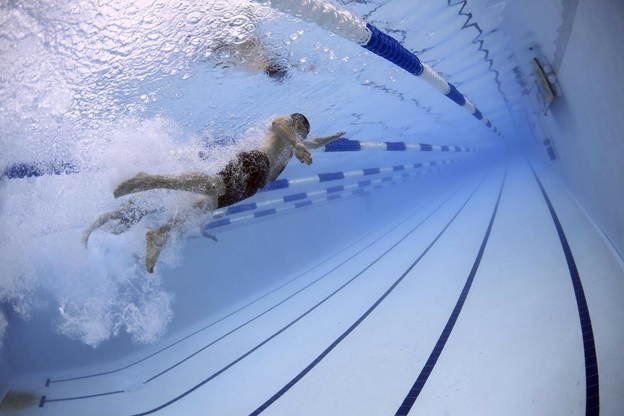Competitive Swimming: 5 effective tips to boost your performance
Swimming as a sport and competitive swimming are two different areas. If you are the latter area and planning to head into the first one, than the first question that comes to the fore is: What should I focus on to increase my performance in the pool? Well, to be honest there are plenty of things that you should focus on but we have narrowed them down to 5 areas that you MUST focus at the start.

But before we dive into the details, I want to ensure that you perfectly understand that competitive swimming is all about building stamina by committing more hours to workout per week, focusing on your diet to fulfill all your dietary requirements, focusing on perfecting techniques and strokes and wearing the right swimwears and training equipment.
The areas that we have outlined here can be easily adjusted within your existing routine and help you make your overall swimming training sessions more goal-oriented and fun at the same time (listed in no particular order):
Focus on technique
One of the real assets of any beginners or professional swimmers is their swimming technique. Having good technique is important because it allows you to swim at a moderate pace or to swim fast without getting exhausted quickly. Swimmers should not be wasting energy by trying to go fast with poor technique; they should aim to maintain the best techniques. Some of the techniques that will improve your swimming performance are:
Hand entry
Drive forward while slicing your hand into the water right about at your goggle line.
Head Position
Keep your head down with a small part of the back out of the water and try not to move your head with body rotation.
Pull
Pull your hands all the way back past your hips.
Kick
Minimize your kicks to improve balance and conserve energy.
Keep your arm from crossing over
Avoid arm crossing over by not moving your head while body rotation and pulling more in a straight line.
Choose Competitive Swimwear
The type of swimsuit you choose will either make or break your swimming technique. Recreational swimming and competitive swimwears are poles apart in terms of the quality of the cloth and the purpose. Competitive swimwear are made of materials that address the needs of competitive swimmers who spend most of their time in the pool and considering efficiency as the main point. Check these things while choosing swimwear for competitive swimming:
In choosing women’s swimwear for competitive swimwears always look for the proper fit – it should be snug not tight; look out for the quality of the fabric and suits that are FINA approved. You can choose from LYRCRA (forgiving and stretchier) or Polyster (durable and colourfast) – consult for the hydrodynamic effectiveness of the suit for lap swimming and aqua jogging.
In addition to the above points, we should consider these additional points while buying women or men’s swimear: The first are the seams – look out for bonded seams as these improve efficiency and reduce drag, the second is look for the water repellency capacity of the fabric and the most important is the compressing ability of the fabric. The better the compression, the better it becomes hydrodynamic.
Swimmers should invest in the right swimsuit, but it doesn’t mean you have to spend lots of money on the latest high-tech swimwear. Buy swimwear that is ideal for competition and that gives you the value of your investment.
Practice the perfect breath
Whether professional or beginners, following the right breathing technique is crucial to gain the perfect balance. If not followed, all the other efforts go in vain. Before learning any other technique, one must be focusing on breathing technique and exercises. It might be challenging initially, but with practice, you will see the difference. Breathing properly means more stamina, if you can inhale more, you can get more oxygen which will let you swim for a long time before getting winded out.
Train Hard
Swimming is a sport that uses most of the body parts, and without proper training, it is difficult to increase your stamina. You should train yourself both inside and outside the pool. Below are some ways to make most of your swimming training:
Train Shorter & Faster: If you want to increase your speed, you have to train faster. Shorter workouts are far more efficient than the longer ones. You have to start with short training so that your muscles are conditioned for longer workouts. Start with swimming for 20 minutes every day which will slowly allow you to elevate your training intensity.
Add equipment to your training: Using swimming accessories like fins, front end snorkel or a paddle will incredibly enhance your swimming training. The equipment will increase your muscular engagement while you swim, thus elevating the overall output.
Dryland Training
Training outside the pool is equally important to strengthen the muscles. Incorporate simple exercises like sit-ups and push-ups in your swimming training.
Nutrition & Recovery
Proper food and nutrition are just as important as the training program. The food and drink you consume works as the fuel. Lots of nutrition is required to achieve optimal performance. Before you start your training sessions, I would advise you to consult with a dietician and work out on a weekly dieting chart. This will ensure that you are up and running for another hard workout session after a day at the pool earlier.
I know these are not all the details but I think these are some of most important areas that you should cover in your initial run. If you have any ideas that I have missed out here, let me know in the comments below.
About the author
Christian Taylor, is a sports freak and because of his passion for sports, he also serves as an communication assistant at Engine Swim – a <leading performance and competitive swimwear manufacturers in Australia>.